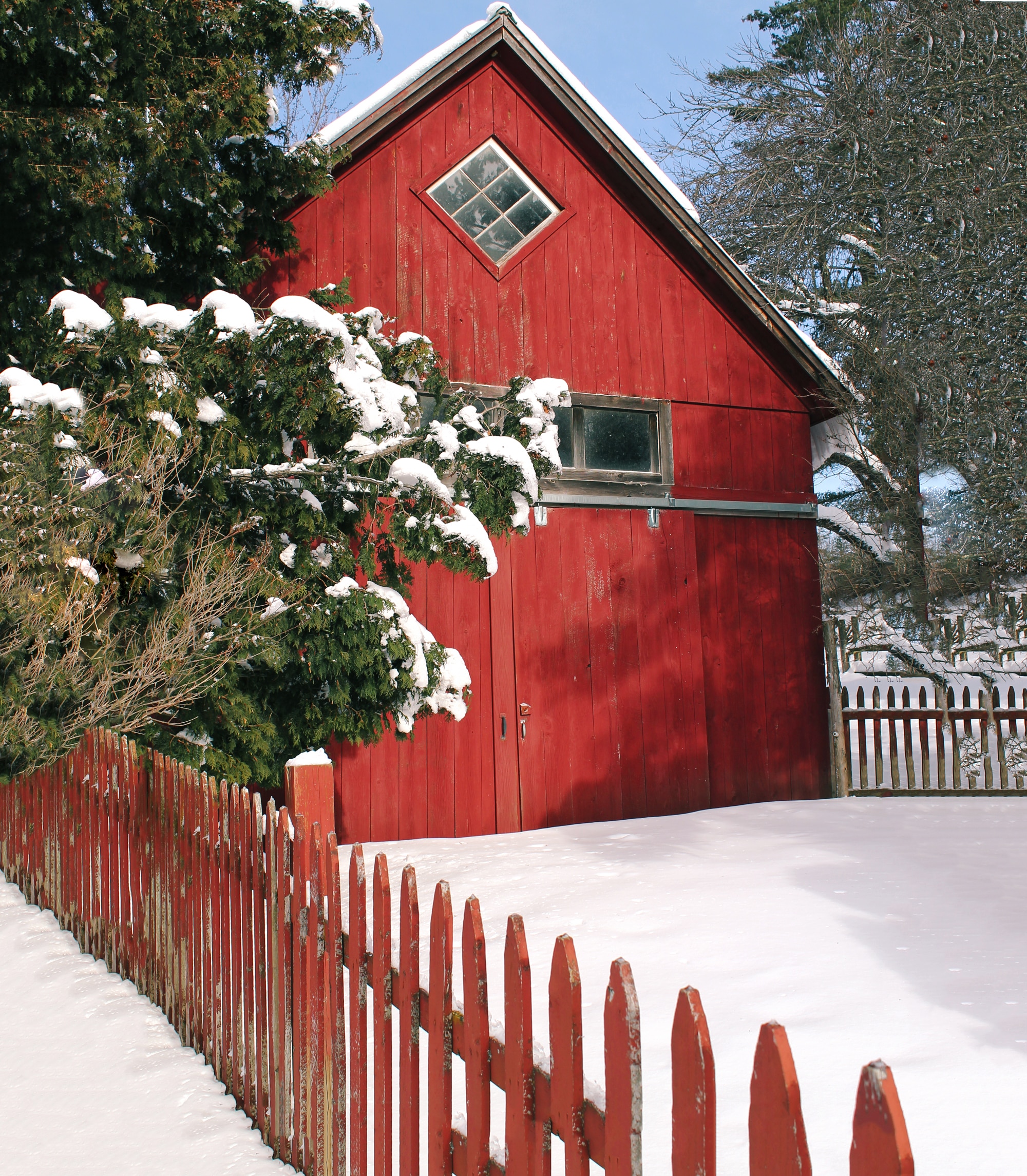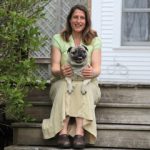Love, Death, and Heifers | The Farmer’s Life: Dispatches from Chickadee Farm in Craftsbury, Vermont
Breeding what you eat is never easy. Nor should it be.

Coffee By Design | Portland, Maine
Photo Credit : Katherine KeenanPenny tried to mount me on Valentine’s Day, aptly enough. She reared up to rest her hooves on my shoulders in hopes of a union—but I turned just in time to sidestep her 500 pounds of brown bulk. Had she connected with my collarbones, she would have driven me down like a maul sinking a peg.
Such gestures are classic signs of a heifer in heat, so I called the AI (artificial insemination) guy, who pulled up that afternoon in his truck. In its bed was a silver keg filled with semen straws kept super-cooled in liquid nitrogen. “I’d like to breed her with one of your smaller bulls,” I requested, not wanting my tiny Jersey to have her uterus overwhelmed by the progeny of a state fair champion. I wanted her to be able to stand up after she delivered her calf, so that consequently she would let down her milk, which I would then take and drink.
The AI guy obliged, and Penny stood sassily still in her stanchion for the one-minute transaction. Thus what was kindled in the dim, cobwebby privacy of my barn, a technical conception costing $15, was delivered in the field in late fall.
The bull calf I helped engender grew, and grew, becoming an ornery yearling who yanked free of his tether and snorted and galloped, until eventually the butcher arrived. And then the source-of-my-future-suppers took his last breath—in the corral, between the place he was conceived and the place he slid into life. The farthest he traveled from this pasture was to the meat locker, as a carcass.
This is all part of husbandry, the proper term for caring for animals you breed and eat. Throughout my 30s, husbandry was something in which I engaged in lieu of having, well, a husband. While I dwelled alone in the farmhouse, all the coupling and consequent offspring-ing transpired inside my barn, where my hens incubated their chicks and songbirds nested in the rafters and the AI guy sidled up behind my Jersey cow with another semen straw.
Once, when I visited a friend to meet her newborn daughter, I wondered if perhaps I’d chosen a more arduous path than my peers who were becoming actual parents. I tried to stifle my bemused grin when my friend’s recently changed infant instantly soiled the fresh diaper. The new mother looked overcome, but to me that tiny smear seemed so manageable.
Before this visit, I’d cleaned my barn, as I did every morning and every evening, a task that entailed hoeing the equivalent of my body weight in manure into a sled and dragging it through the snow, out to the manure pile, and then returning to cast lime and toss fresh sawdust underneath the cows. On that particular morning, for reasons that cannot be explained, my cows promptly evacuated another 15 pounds of manure. Ah, a tiny diaper containing mere spoonfuls of waste—You poor thing, I thought.
And yet, I know that seeing to the well-being of animals—creatures who provide food, who become food—is fundamentally different from raising a family. Every November, Dave the butcher drives into the dooryard in his dark blue pickup truck, a hydraulic jack in his flatbed. Together we will kill four lambs. In fact, Dave gets so booked up that I often have to make a reservation with him before the lambs have even been born.
A week or so before his visit, Dave called to make sure we were still on. Another client, a 75-year-old lady who raised pigs, needed him to come and slaughter them before her son went to work at 7 in the morning. Dave complained, “Often when folks raise an animal, it’s the last thing they think of.”
So, is that hard? someone will ask about killing our lambs, and my answer remains: Of course. And if I continue to do it, year after year, as I have year after year, I’ll never want it to be anything but hard. It’s a sacrifice. It’s the opposite of having the AI guy drive over: Instead of creating a life, I’m deliberately taking one, and sometimes more than one.
My barn, more than any place I know, epitomizes the two-way door of life. It’s a shelter that is at once maternity ward and morgue. I remember opening the barn door one afternoon to discover Penny licking her little brown calf. How he tottered around, nosing her belly, trying to find her udder.
Undoubtedly an enormous gulf lies between tending flocks and herds and raising one’s own species. Yet as other couples deepen their alliances on the occasions of their children’s birth, my bond with the man I eventually married, Howie, has been fortified on very different sorts of occasions. Even before Howie and I uttered our wedding vows, he had assumed a role in my project of animal husbandry.
There was the night when, alarmed by the coyotes’ nearby yowls, I convinced him to help me lift each of the five night-blind turkeys out of the corral and carry them across the yard into the barn. Needless to say, the 30-pound birds were more disturbed by our 2 a.m. abduction of them than by any of the coyotes’ arias. The deep scratch an anxious tom scored into Howie’s hand in the process both preceded and spoke of a deeper commitment to this homestead than a wedding band.
And then there was the time when a sheep took sick with a brain infection caused by a meningeal worm, a mostly incurable disease that progressively paralyzes the animal. Howie borrowed a neighbor’s pistol, and I filled a bucket of grain while he loaded the bullet. The sheep’s collapse was a relief and a sorrow, but next came the awkward task of hefting it into the sled and dragging it out to the grove to bury it. We covered it with a tarp lest drivers along the road notice us towing this animal, the size of a yellow Lab, across the open field. What kind of people are they? they would have wondered.
Indeed, what kind of people are we?
I suppose we are the kind that cultivates land and raises creatures for food and occasionally commits these mercy murders, as when the cat brought in a tousled lump—a mortally wounded songbird chick, it was just a throbbing feathered heart with broken wings. I put it in my husband’s palm and we went out into the yard, where I found a sizable rock. And after we had buried the chick, we got back into bed and held hands, those same hands, comforting each other.
 Julia Shipley is the author of three poetry chapbooks and most recently a prose collection, Adam’s Mark: Writing from the Ox House, supported by a 2010-2011 Vermont Arts Council Creation Grant and published by Plowboy Press.
Julia Shipley is the author of three poetry chapbooks and most recently a prose collection, Adam’s Mark: Writing from the Ox House, supported by a 2010-2011 Vermont Arts Council Creation Grant and published by Plowboy Press.







